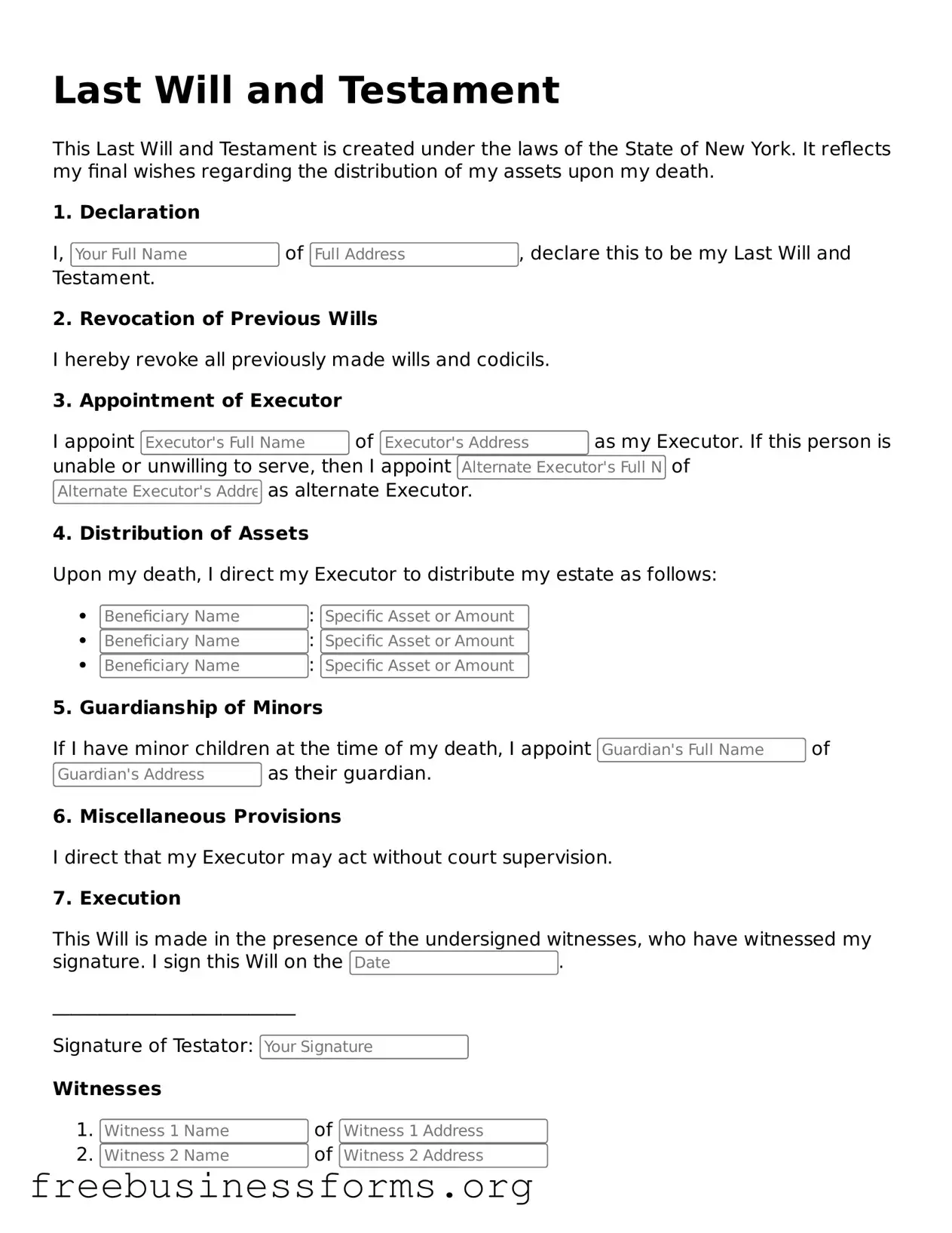Blank Last Will and Testament Template for New York
The New York Last Will and Testament form is a legal document that outlines how a person's assets and affairs should be managed after their death. This form ensures that your wishes are clearly stated and can help prevent disputes among heirs. Understanding its importance is essential for anyone looking to secure their legacy.
Open Form Here
